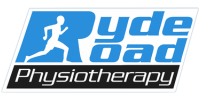Physiotherapy has been shown clinically to help manage some of the signs and symptoms of blocked ducts or mastitis. A blocked duct can be defined as a blockage of one or more of the ducts that carry milk to the nipple for the purpose of breastfeeding. Mastitis can develop if a blocked duct is not cleared and develops in to an infection.
Signs or symptoms of a blocked duct or mastitis include:
- Redness
- A lump or thickness in the breast
- White spots around the nipple
- Pain in the breast
- Fever and/or flu-like symptoms
Causes of a blocked duct or mastitis include:
- Poor posture
- Putting off or missing feeds
- Not allowing the breast to completely drain
- Neglecting feeding from one breast
- Wearing tight bras
- Applying too much pressure with your thumb on the breast when feeding
It is important to effectively manage mastitis or blocked ducts, and in turn be pro-active with our advice and education to prevent further recurrences as research suggests that the greatest risk factor for developing mastitis is having had a previous episode (Fetherstone, 2003). In addition, mastitis has an incidence rate of up to 33% in the puerperium with most incidences occuring in the first 2-3 weeks post-partum (Spencer, 2008).
Physiotherapy can help manage these conditions through:
- Postural education
- Advice regarding appropriate clothing/fitting of bras
- Advice regarding drainage of breast
- Advice regarding appropriate rest
- The use of manual techniques such as: heat and ice, massage of the pectoral muscles and breast, kinesio tape application, effleurage, lymphatic drainage and real time ultrasound.
When attending physiotherapy, our aim is to use this advice and manual techniques to allow you to effectively drain your breast. As a result, we ask that you time your appointment just prior to a feed to allow you to feed post treatment. We will help put you in an optimal posture, show you ways that you can appropriately hold your infant while maintaining a good posture and then finally give you privacy to perform a feed.
Results should be seen within the first session and occasionaly two sessions may be needed to completely clear the breast. If a follow up is needed, it will be organised the day post treatment, or closest to.
When seeking treatment for a blocked duct or mastitis, it is ideal to get in as soon as possible as the smaller the area affected, the easier to drain. That does not mean, however, that a large area cannot be treated. It certainly can.
When being on antibiotics for mastitis, you can still be treated with physiotherapy and be improving the condition of the ducts to allow for more opening, the effectiveness of the antibiotics may be increased.
If you have any questions, please do not hestiate to contact us.
Happy feeding!
